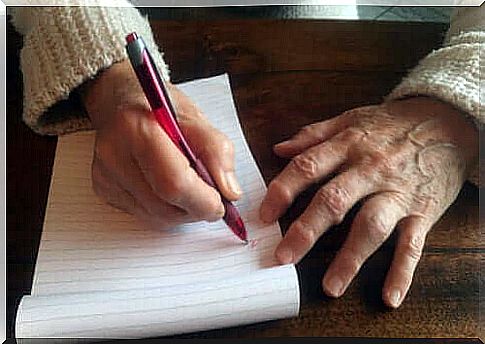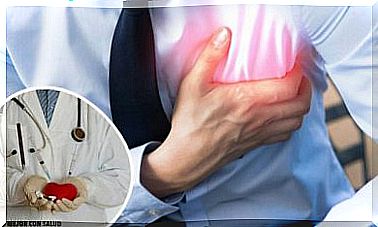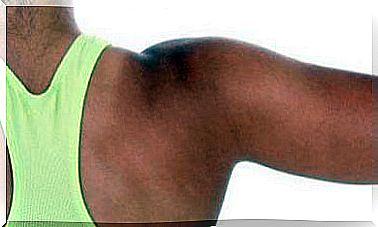Hard Skin Of Writing: Causes And Treatment

Hard skin from writing is also known as “writing bulge” or “nerd bulge”. It is a hardness that occurs on one of the fingers of the hand due to the constant friction caused by the use of pencils, pens or other writing tools.
Is it at all possible to remove calluses from writing?
Although it does not pose a health problem, hard skin does not look good and it causes irritation. For that reason, there are some people who seek treatment to reduce the size of it or remove it completely.
Fortunately, there are several options you can try, as we will explain below.
Why does hard skin arise from writing?
As explained in an article published in the American Family Physician, hard skin is the consequence of a physiological response from the skin known as “hyperkeratosis”. It is caused by a continuous pressure or friction between the skin and a particular material.
Hard skin of writing is in particular caused by the constant use of writing tools such as pens, pencils, markers and crayons. When pressure is applied to one of the fingers of the hand, which may be the middle finger or the ring finger, these elements form a bulge-like hardness which consists of dead cells.
The primary function of this is to protect the underlying skin area that might otherwise become irritated or infected. Although harmless, it is uncomfortable and gives the finger an ugly appearance. That is why people often look for solutions to minimize it.
Also read: Scrub your feet with coconut oil and salt
Recommended treatments for hard skin of writing
There is no surgical treatment to completely remove calluses. As detailed by the American Academy of Dermatology , most people tend to disappear when the friction that has caused them stops. There are also some therapeutic options that can speed up this process.
In case of hard skin of writing, there are some approaches that are usually effective. Even then, they do not create immediate results, and one has to arm oneself with patience so as not to cause further harm. Pay close attention to the following tips!
Exfoliation
The first recommendation to reduce the appearance of hard skin from writing is to soften and exfoliate. According to information from the Mayo Clinic, this simple process will allow you to soften the skin and remove accumulated, dead cells.
- First of all, you need to soak your finger in warm water for 10 minutes.
- Next, gently scrub the hard skin with a pumice stone or file. The idea is to remove dead cells.
- The treatment should be repeated every day until an improvement is noticed.
Moisturizing
The American Academy of Dermatology recommends the application of moisturizing products with salicylic acid, ammonium lactate or urea. These ingredients help soften hard skin by burning and gradually breaking down dead cells.
Other useful home products for moisturizing include the following:
- Aloe vera gel.
- Coconut oil.
- Shea butter.
- Castor oil.
- Vitamin E.
- Olive oil.
Aspirin
Ideally, you should use salicylic acid products that are prescribed by a dermatologist. As an optional or complementary solution, you can try a simple home remedy with aspirin.
According to a study in Clinical, Cosmetic, and Investigational Dermatology , salicylic acid acts as a keratolytic substance and it helps relieve dermatological problems.
- To make this remedy, crush 3-5 aspirin tablets into powder.
- Next, moisten it with a little water to form a paste.
- Apply the mass on the hard skin, rub gently and wrap it for 10-15 minutes with cling film.
- Repeat this every day until the hard skin has become smaller.
Prevention of hard skin from writing
If you write regularly, it is difficult to prevent hard skin. However, there are some simple caveats that can prevent this bulge from occurring. Here are some of the most important:
- Wear finger protection when writing. Thick bandages or cotton gloves can help protect your fingers from friction with writing utensils.
- Get a pencil grip. Another way to create a barrier between pencils and fingers is with a rubber or foam grip. This is placed over the pencil or pen. There are actually some who already have such one on from the start.
- Choose pencils with gel ink. This type requires less pressure when applied to paper. Therefore, it reduces pressure on the finger.
- Relax in your grip. Of course, you should try not to put too much pressure when writing. Avoid pressing your pencil too hard against the paper. You also need to take breaks and remove your hand to relax in it.
Do not leave the site without visiting: Onions and clear vinegar against corns
Is it necessary to consult a dermatologist?
Since it is a harmless lesion, hard skin usually resolves itself over time without the need to visit a dermatologist. However, you should consult a dermatologist if the treatment we have mentioned above does not yield results. The professional may indicate other therapeutic options if necessary.
It is also important to seek intervention from a specialist if there are signs of infection. This includes symptoms such as redness, pus, pain, inflammation or bleeding.
Keep this in mind!








